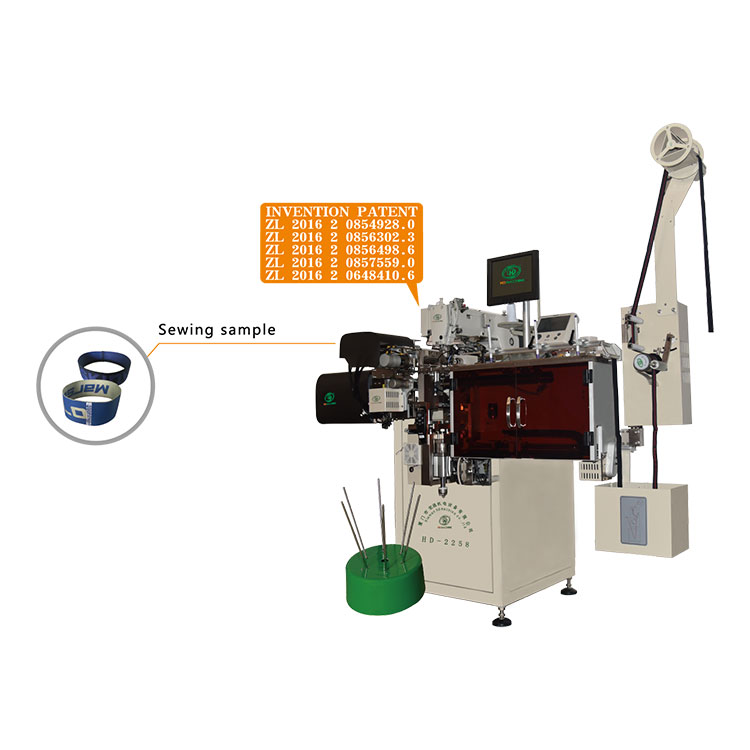- English
- Español
- Português
- русский
- Français
- 日本語
- Deutsch
- tiếng Việt
- Italiano
- Nederlands
- ภาษาไทย
- Polski
- 한국어
- Svenska
- magyar
- Malay
- বাংলা ভাষার
- Dansk
- Suomi
- हिन्दी
- Pilipino
- Türkçe
- Gaeilge
- العربية
- Indonesia
- Norsk
- تمل
- český
- ελληνικά
- український
- Javanese
- فارسی
- தமிழ்
- తెలుగు
- नेपाली
- Burmese
- български
- ລາວ
- Latine
- Қазақша
- Euskal
- Azərbaycan
- Slovenský jazyk
- Македонски
- Lietuvos
- Eesti Keel
- Română
- Slovenski
- मराठी
- Srpski језик
- 简体中文
Are there automated sewing machines?
2024-12-21
In the ever-evolving landscape of technology and manufacturing, the integration of automation into various industries has revolutionized production processes. From automotive manufacturing to food processing, automation has significantly increased efficiency, precision, and productivity. The textile and apparel industry is no exception to this trend.

Automated sewing machines, often referred to as sewing robots, are sophisticated devices designed to stitch fabric together with remarkable speed and accuracy. These machines leverage advanced robotics, computer programming, and sensor technology to perform intricate sewing tasks that were traditionally carried out manually by skilled seamstresses.
The concept of automated sewing is not entirely new. Over the decades, the sewing industry has witnessed incremental improvements in machinery, from simple electric sewing machines to more complex computer-aided systems. However, the advent of true automation, with robots capable of independent operation and decision-making, represents a quantum leap forward.
Key Features and Capabilities
Automated sewing machines boast a range of impressive features that set them apart from traditional sewing equipment. These include:
Precision and Consistency: Sewing robots are programmed to stitch fabric with unparalleled precision, ensuring that every seam is perfectly aligned and consistent. This level of accuracy is particularly crucial in the production of high-end fashion and technical apparel, where even the smallest deviation can compromise the final product.
Speed and Efficiency: Automated sewing machines can operate at speeds far beyond the capabilities of human seamstresses. This increased productivity allows manufacturers to produce larger quantities of garments in a shorter timeframe, reducing lead times and meeting market demands more effectively.
Versatility: Modern sewing robots are designed to handle a wide variety of fabrics and stitching patterns. With the ability to switch between different tasks and configurations, these machines can be adapted to produce a diverse range of products, from simple T-shirts to complex couture pieces.
Reduced Labor Costs: By automating sewing processes, manufacturers can significantly reduce labor costs. This is particularly beneficial in regions where skilled labor is scarce or expensive, enabling companies to maintain competitive pricing and profitability.
Applications in the Textile Industry
The applications of automated sewing machines in the textile and apparel industry are vast and varied. From mass-producing basic clothing items like T-shirts and jeans to crafting bespoke fashion pieces, these machines are transforming the way garments are made.
In the realm of mass production, automated sewing machines enable manufacturers to quickly and efficiently produce large quantities of garments with consistent quality. This is particularly important for fast-fashion brands and retailers, who rely on rapid turnaround times and cost-effective production methods to stay competitive.
On the other hand, automated sewing machines are also finding their way into the realm of couture and bespoke fashion. While these segments traditionally emphasize craftsmanship and hand-stitched details, the integration of automation can support seamstresses in performing repetitive tasks, freeing up their time to focus on more creative and intricate aspects of design.


